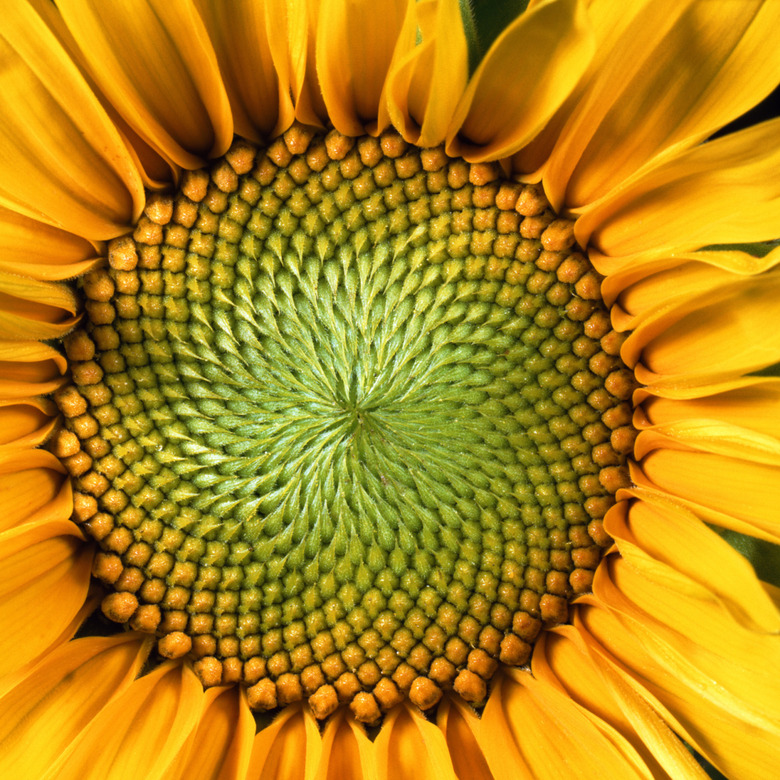What Kind Of Sunflowers Are Best To Plant For Eating?
A trip to the old ball field wouldn't be the same without a bag of sunflower seeds. Favorites of kids and adults, easy-to-grow sunflowers make a beautiful addition to the garden and come in a range of colors, flower size and overall height. While some gardeners' goal is to produce cut flowers to bring indoors, other gardeners grow sunflowers for their large heads full of delicious seeds, which are relished by sports spectators and local wild birds alike.
Growing Sunflowers
Step 1
Among the least fussy of all plants to grow in the garden, the cheerful annual sunflower (Helianthus annuus) has one main requirement to grow successfully: at least 6 hours of sunlight a day — and ideally more than 8. Seeds can be planted relatively early, as young plants are cold tolerant. In northern latitudes, planting normally takes place as early as May. In southern areas, gardeners plant in April. Sunflowers grow in a wide range of soils, from sand to clay. Although its deep taproot and extensive side root system boost the plant through dry spells, it still needs regular watering of an inch per week for best seed head production. Temperatures below 28 degrees Fahrenheit typically kill mature plants.
- A trip to the old ball field wouldn't be the same without a bag of sunflower seeds.
- Among the least fussy of all plants to grow in the garden, the cheerful annual sunflower (Helianthus annuus) has one main requirement to grow successfully: at least 6 hours of sunlight a day — and ideally more than 8.
Best Eating Varieties
Step 1
While maturity times vary among varieties, most need at least three months to grow and produce ripe seed heads. Planting too late in the season, usually after June or mid July, does not provide enough time for heads to mature fully before frost. Wear gloves when planting seeds to protect yourself from soil-borne pathogens. Most eating varieties are classified as either tall or giant. Tall sunflowers should be planted 1 inch deep and thinned after germination to 1 foot apart; giant varieties require 2- to 3-foot spacing for proper development. Look for "Mammoth Russian" or "Russian Giant," two popular eating types that grow from 10 to 15 feet tall with seed heads 12 to 24 inches in diameter. "Kong" is another type that grows to 10 feet, with smaller heads. "Aztec Gold" is a popular eating variety. For a small garden, plant "Sunspot," which reaches only 2 feet in height but produces 10-inch seed heads. Other types include "Jumbo," "Giant Grey Stripe" and "Paul Bunyan Hybrid."
- While maturity times vary among varieties, most need at least three months to grow and produce ripe seed heads.
- Tall sunflowers should be planted 1 inch deep and thinned after germination to 1 foot apart; giant varieties require 2- to 3-foot spacing for proper development.
Harvesting Seed
Step 1
Timing when to harvest the seed head can be tricky, but there are two main indicators a flower is ripe for picking. Seed heads start to droop, sometimes dramatically in the tallest varieties, and the back of the flower head turns yellow. If you want seeds for your own snacking purposes, you'll need to protect them from birds, which swarm ripe sunflowers to consume the rich, oily seeds. To cure and dry seeds in the field, cover the head with a cheesecloth bag or perforated paper bag for three to four weeks or until the seed head has completely dried out. To cure indoors, cut off the head with at least a foot of stalk attached and hang in a cool, well-ventilated area, covered with a bag or cheesecloth to catch any seed that falls as it dries. Fully cured seeds detach from the flower easily and can be collected by rubbing the seed head with your thumbs and fingers.
Storing Seed
Step 1
After harvesting, seeds need to continue to dry for several more weeks or less if you use a dehydrator. Store quantities of seed in small mesh bags or paper bags with holes and hang to dry, checking every week for dryness and to stir seeds around. Alternately, spread seeds in a single layer over screens and dry in a well-ventilated area, making sure to protect from birds if drying outdoors. Seeds need to be fully dry before storing in closed containers or they will turn musty or moldy.
- Timing when to harvest the seed head can be tricky, but there are two main indicators a flower is ripe for picking.
- To cure indoors, cut off the head with at least a foot of stalk attached and hang in a cool, well-ventilated area, covered with a bag or cheesecloth to catch any seed that falls as it dries.
